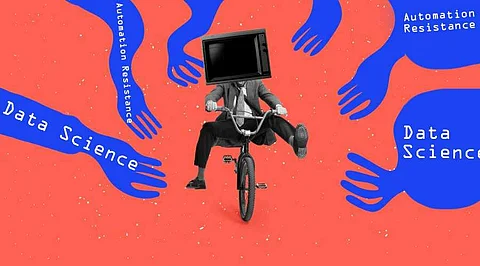
- Insights
- Cryptocurrencies
- Gadgets
- Stocks
- White Papers
- Reports
- Industry
- Geography
- Insights
- Cryptocurrencies
- Gadgets
- Stocks
- White Papers
- Reports
- Industry
- Geography


In an era dominated by data, organizations are increasingly turning to data science to gain valuable insights and drive informed decision-making. As the demand for data-driven solutions continues to rise, the role of data science automation has become pivotal. Automation can streamline processes, enhance efficiency, and free up valuable human resources. However, despite its potential benefits, there can be resistance to data science automation within an organization. Addressing this resistance is crucial to fully harness the power of automation and maximize the impact of data science initiatives.
Resistance to automation in data science can stem from a variety of sources. Some common factors include:
Fear of Job Displacement: One of the primary reasons for resistance is the fear of job loss. Employees may worry that automation will replace their roles, rendering their skills obsolete.
Lack of Understanding: Misconceptions about automation can lead to resistance. Some individuals might not fully comprehend the benefits of automation, leading them to resist its implementation.
Loss of Control: Automation can make processes less transparent, leading to a loss of control over outcomes. This can create resistance among those who value having a hands-on approach.
Change Management Issues: Human beings are creatures of habit, and any change, including the introduction of automation, can be met with resistance due to discomfort with the unknown.
Perceived Complexity: Some employees might believe that automation implementation is complex and beyond their skill set, leading to apprehension.
Education and Communication: Addressing the fear of job displacement requires clear communication. Organizations should emphasize that automation is not about replacing jobs but about augmenting human capabilities. Highlight how automation can take over repetitive tasks, allowing employees to focus on more strategic and creative aspects of their roles.
Training and Upskilling: To combat the fear of automation complexity, organizations should invest in training programs. Provide employees with the necessary skills to work alongside automated systems. This empowers them to use automation tools effectively and boosts their confidence.
Transparency in Implementation: To alleviate concerns about loss of control, organizations should provide transparency in the automation processes. Employees should understand how decisions are made by automated systems and have a level of control over their functioning.
Demonstrate Benefits: Showing tangible benefits of automation can combat resistance born out of misunderstanding. Present case studies and success stories highlighting how automation has led to improved efficiency, accuracy, and better outcomes.
Inclusion in Decision-Making: Involve employees in the decision to adopt automation. When they feel their input is valued and considered, they are more likely to embrace the change.
Gradual Implementation: Introduce automation in stages to make the transition smoother. Gradual implementation allows employees to adapt at their own pace, reducing the shock of sudden change.
Change Champions: Identify and empower individuals who are open to change and automation. These "change champions" can influence their peers positively and demonstrate the benefits of embracing automation.
Highlight Creativity and Problem-Solving: Emphasize that automation takes care of routine tasks, freeing up time for more creative and strategic thinking. This can motivate employees by showcasing how automation complements their expertise.
Addressing Job Roles: As automation takes over certain tasks, redefine job roles to incorporate higher-value responsibilities that require human skills, such as critical thinking, empathy, and decision-making.
Continuous Feedback: Establish channels for employees to provide feedback on automation tools and processes. This not only makes them feel involved but also helps in refining and optimizing automation systems.
Embracing a Positive Automation Culture: Ultimately, overcoming resistance to data science automation requires a shift in organizational culture. It's not just about implementing tools; it's about creating an environment where employees see automation as an enabler rather than a threat. By fostering a culture that values adaptability, learning, and collaboration, organizations can create a workforce that embraces automation and leverages it to its fullest potential.
In conclusion, data science automation is a transformative force that can propel organizations to new heights of efficiency and insight. However, resistance to automation is a natural human response to change.
Disclaimer: Analytics Insight does not provide financial advice or guidance. Also note that the cryptocurrencies mentioned/listed on the website could potentially be scams, i.e. designed to induce you to invest financial resources that may be lost forever and not be recoverable once investments are made. You are responsible for conducting your own research (DYOR) before making any investments. Read more here.
